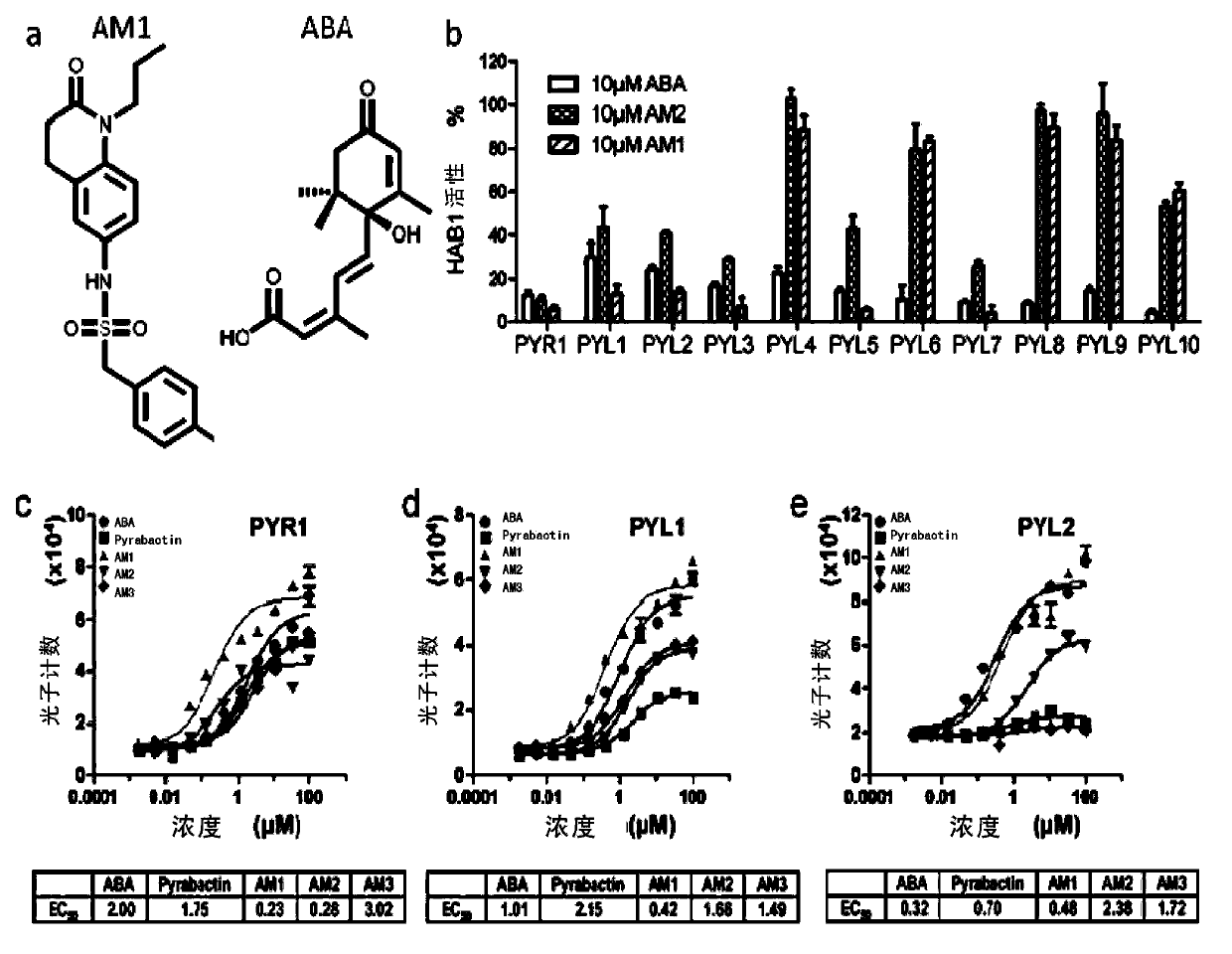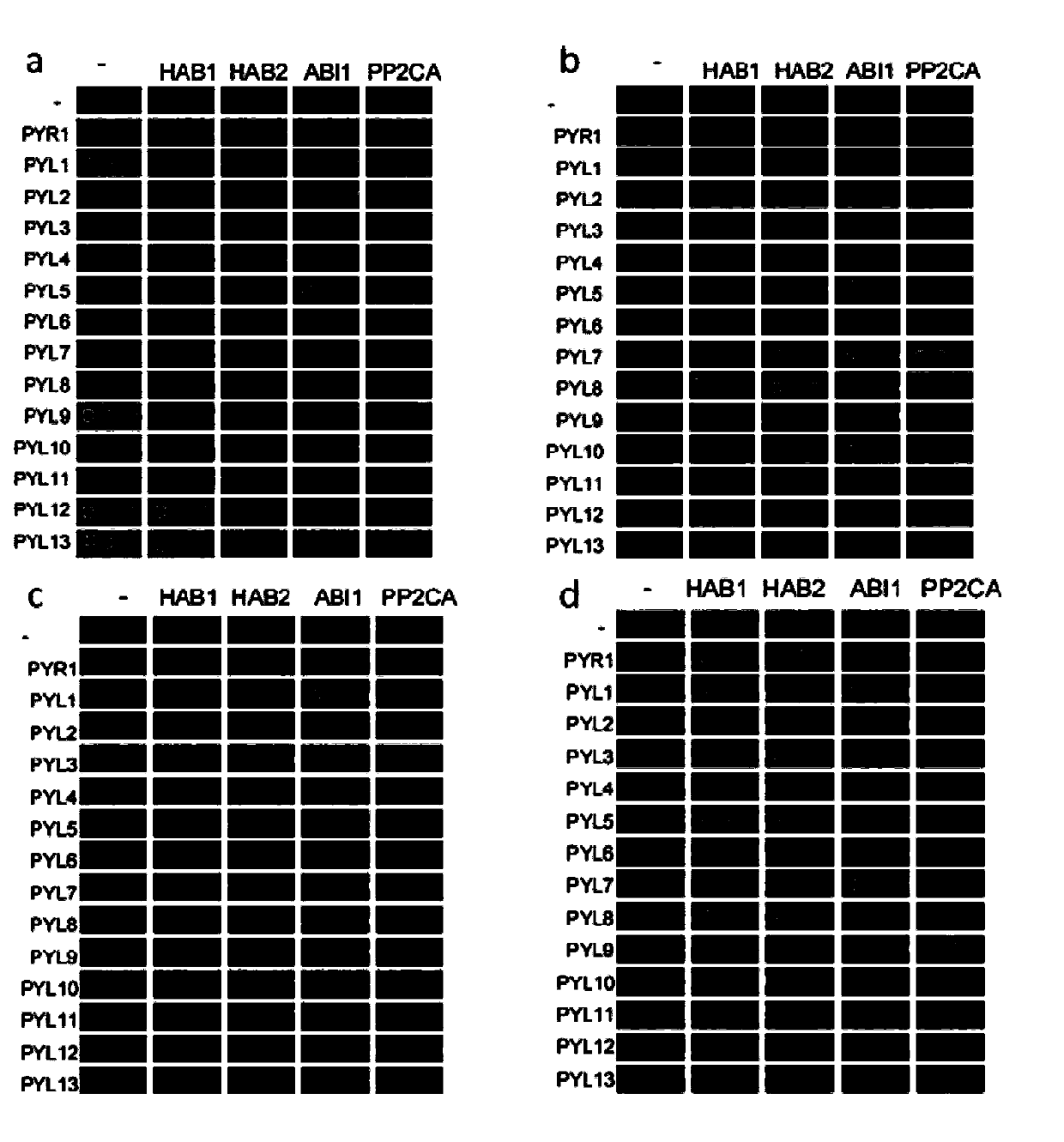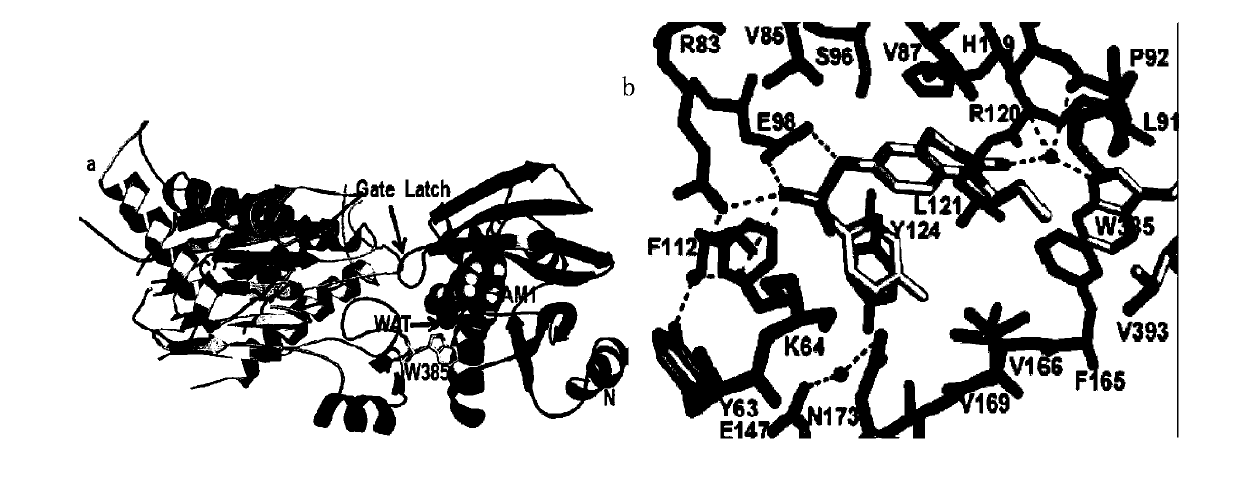Small molecule compound for enhancing plant stress resistance
A plant stress resistance and compound technology, applied in the fields of biotechnology and botany, can solve the problems of inability to enhance plant seedling and mature drought tolerance, low application value, and low physiological activity
- Summary
- Abstract
- Description
- Claims
- Application Information
AI Technical Summary
Problems solved by technology
Method used
Image
Examples
Embodiment 1
[0128] Embodiment 1, small molecule compound AM1
[0129] 1. Structure
[0130] The small molecular compound AM1 (ABA mimic1) contained in the present invention has a different chemical structure from ABA, and consists of a xylene connected to a sulfonyl group and a quinoline derivative connected to an amino group, and has no optical activity, such as figure 1 a.
[0131] 2. In vitro biochemical experiments, PP2C protein phosphatase activity experiments
[0132] In vitro biochemical experiments show that AM1, as a broad-spectrum and highly efficient PYL receptor agonist, can bind to multiple PYL receptors, promote the latter's binding and inhibit the PP2C protein phosphatase activity.
[0133] The PP2C protein phosphatase activity experiment using SnRK2.6 phosphorylated polypeptide as the substrate showed that in the presence of AM1, multiple PYL receptors can bind to PP2C protein phosphatase (HAB1), thereby inhibiting the phosphorylation of SnRK2.6 by HAB1. De...
Embodiment 2
[0141] Example 2, the structure of small molecule compound AM1, PYL receptor protein and HAB
[0142] The inventors have detected the crystal structure of the PYL2-AM1-HAB1 complex. From the schematic diagram of the three-dimensional structure of the complex, the oxygen atom on the quinoline derivative of AM1 can pass through the free water molecule and the tryptophan at the 385th position of HAB1 (W385 ) to form a hydrogen bond, thereby further bringing HAB1 and PYL2 ( image 3 a) From the local schematic diagram of the two-dimensional structure of the complex, AM1 exists in the pocket structure of PYL2, and is connected to multiple active sites of PYL2 by hydrogen bonds through the oxygen atom on the sulfonyl group ( image 3 b). Therefore, AM1 binds in the pocket structure of PYL2, and binds to the key amino acid active sites of PYL2 and HAB1 through a mechanism similar to ABA, thereby further promoting and stabilizing the binding of PYL2 and HAB1. This result expla...
Embodiment 3
[0143] Example 3, AM1 can cause gene expression similar to ABA
[0144] The present inventors analyzed the effect of adding AM1 on gene expression in plants. Gene expression analysis showed that the addition of AM1 caused gene expression similar to that of ABA ( Figure 4 ). After 50 μM AM1 treatment, the expression levels of 6 known genes related to environmental stress induced by abscisic acid in 10-day-old wild-type Arabidopsis (Col-0) seedling plants were significantly increased, which was close to that after 50 μM ABA treatment. The expression level of the corresponding gene in the PYL receptor triple mutant strain (pyr1; pyl1; pyl4) has a limited increase. This result indicates that the induction of environmental stress-related genes by AM1 is through the ABA signal mediated by the PYL receptor. through the ( Figure 4 a).
[0145] The results of RNA sequencing (RNA-seq) showed that compared with the DMSO control group, the expression levels of about 4500 gen...
PUM
 Login to View More
Login to View More Abstract
Description
Claims
Application Information
 Login to View More
Login to View More - R&D
- Intellectual Property
- Life Sciences
- Materials
- Tech Scout
- Unparalleled Data Quality
- Higher Quality Content
- 60% Fewer Hallucinations
Browse by: Latest US Patents, China's latest patents, Technical Efficacy Thesaurus, Application Domain, Technology Topic, Popular Technical Reports.
© 2025 PatSnap. All rights reserved.Legal|Privacy policy|Modern Slavery Act Transparency Statement|Sitemap|About US| Contact US: help@patsnap.com



